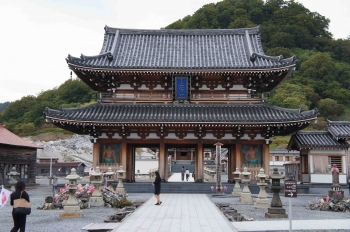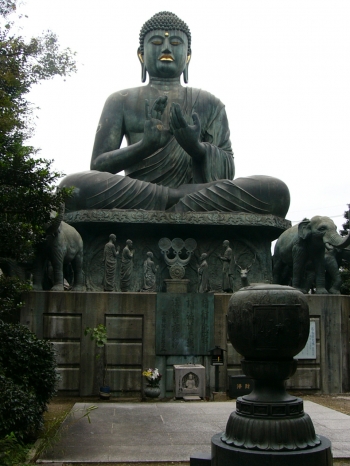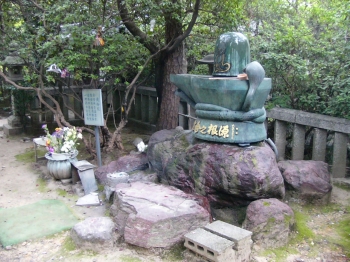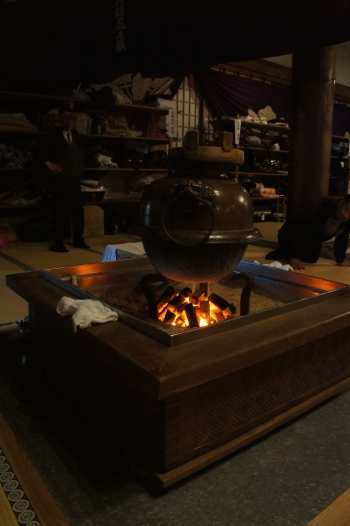Dogen’s (1200–53) Soto Zen is known for its emphasis on shikantaza—“sitting only.” In his popular Once Born Zen – Twice Born Zen: The Soto and Rinzai Schools of Japanese Zen, M. Conrad Hyers highlights Dogen’s focus on “sitting meditation” (zazen) as the manifestation of Buddhahood, and contrasts it with the Rinzai master Hakuin’s (1686–1768) description of awakening as the cataclysmic experience of the “great death” (daishi) and the “great awakening” (daigo) (Hyers 1989). Dogen himself clearly prioritizes “sitting meditation” over all other practices when he declares in his Shobogenzo bendowa that “[f]rom the first time you go before your master and receive his teaching, you no longer have a need for incense offerings, homage-paying, nembustu [the recitation of the name of Amid Buddha], penance disciplines or sutra reading. Just cast off your body and mind in the practice of zazen” (Waddell and Abe 2002, 11). Dogen is very clear here: all that is needed to receive the Buddha Dharma is instruction from a teacher and the practice of “sitting meditation.” This is the teaching of Dogen. This is the teaching of many Soto teachers I have encountered myself.
However, upon entering a Soto monastery, one is surprised that zazen is apparently not given the central role in monastic life that Dogen’s words would seem to demand. Last September, when I was teaching a course on Japanese philosophy and religion at Saitama University, I took my students to Toko-ji, a Soto temple near Omiya Station in Saitama city. While the temple offered a weekly meditation group, most rooms in the temple itself were dedicated to funerals and commemoration services. This is not unique to Toko-ji. In fact, it is not rare that Buddhism in Japan is characterized as “funerary Buddhism” (soshiki bukkyo). Even during the precept-bestowing assembly at Eihei-ji, which I attended in April and discussed in my previous article on this website, we attended commemorative services. Not only this, but in the week-long preparation, we performed almost all the practices Dogen lists as unnecessary, namely, “incense offerings, homage-paying, . . . penance disciplines or sutra reading.”
But the wealth of practice performed in Soto institutions does not stop there. Soto temples offer a variety of common practices such as “sutra-copying” (shakyo), “copying of the image of the Buddha” (shabutsu), and pilgrimages in addition to “meditation groups” (zazenkai). And then there are Soto temples that are somewhat more exceptional. I am thinking in particular of Togan-ji in Nagoya and Bodai-ji on Osorezan. Togan-ji is a beautiful temple close to Nanzan University known for the “great Buddha of Nagoya,” installed in 1987. Tucked away between the main temple area and the graveyard are small shrines dedicated to phallic symbols. In front of the “main hall” (hondo) there is an altar dedicated to the mizuko kuyo, literally “water child ceremony,” in which the loss of aborted fetuses and stillborn children is mourned and penance performed. These kinds of rituals are not rare in Japan, but it is unusual to see such an altar in a Soto Zen temple.
Osorezan, on the other hand, is unique in the religious landscape of Japan. The “mountain” consists of two areas: the temple in which rituals concerning death and commemoration are performed and an open area in which one finds Buddha statues, offerings, and objects that conjure memories of the


















